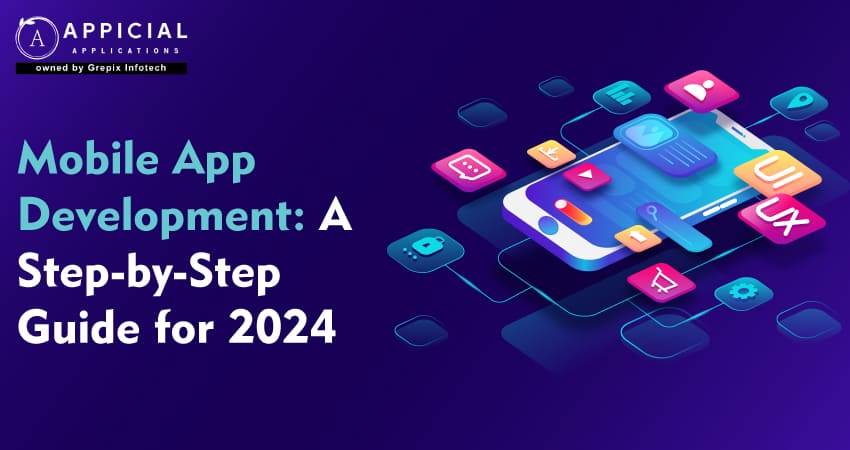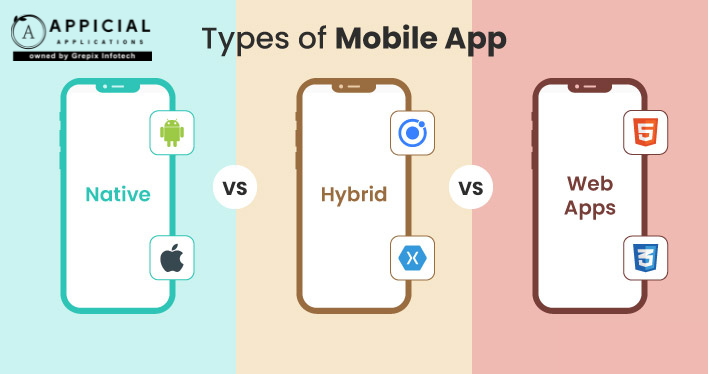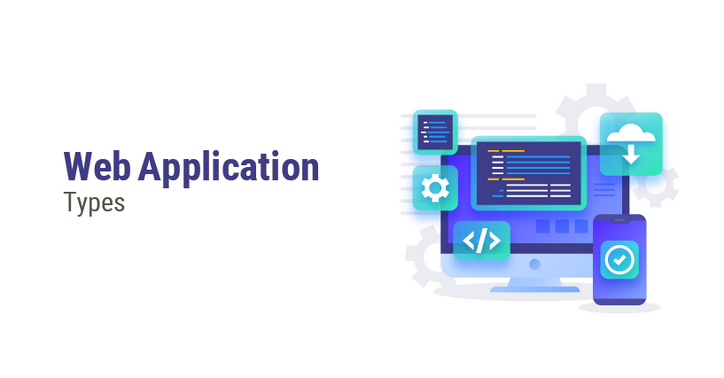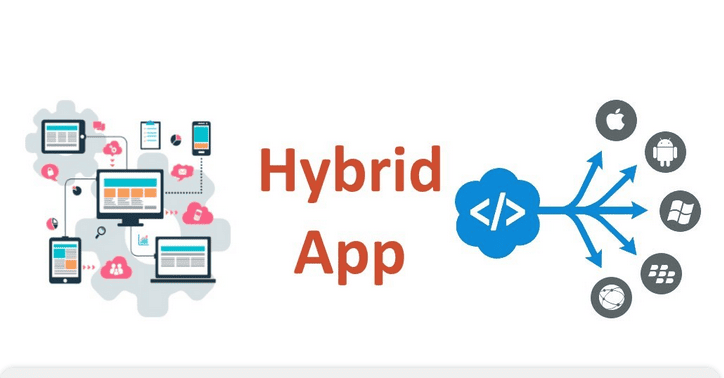
Mobile App Development: A Step-by-Step Guide for 2024
In an era where the smartphone is an extension of the self, mobile applications are more than just a market necessity; they are indispensable tools for engaging customers, optimizing processes, and expanding business operations. As we navigate deeper into the digital age, mobile apps continue to dominate the tech landscape, serving as essential tools for businesses across all industries. The ability to keep users engaged, improve service delivery, and tap into new revenue streams makes mobile app development a critical strategy for companies looking to stay competitive in a rapidly evolving market. With the onset of 2024, it becomes imperative for businesses and developers to understand the nuances of building effective and user-centric mobile applications.
This blog, "Mobile App Development: A Step-by-Step Guide for 2024" offers a comprehensive roadmap for anyone looking to develop an app from scratch or refine their existing development process. Whether you're a budding entrepreneur, an established business, or a curious developer, this guide provides detailed insights into each phase of the development journey—from ideation and planning through design, development, testing, launch, and maintenance. As technology advances and user expectations grow, mastering these steps will be crucial for delivering a mobile application that is not only functional but also successful in the crowded digital marketplace.
The "Mobile App Development: A Step-by-Step Guide for 2024" blog offers a comprehensive roadmap for creating successful mobile apps, from initial concept to post-launch maintenance. It covers market research, planning, UI/UX design, development, testing, and launch strategies. The guide highlights the importance of understanding user needs and leveraging the latest technologies across various platforms including iOS, Android, and web-based applications. With insights into monetization and user engagement, the blog prepares developers and businesses to navigate the competitive digital landscape, ensuring their mobile apps not only function effectively but also achieve substantial market success in 2024.
Mobile App Statics In 2024
Mobile apps are perhaps the most familiar type of application development, largely due to the widespread use of smartphones. On average, a smartphone user interacts with about 10 apps daily and 30 apps monthly, showing that there is significant opportunity for multiple apps to engage a single user.
Notably, the iPhone remains the most popular smartphone in the U.S., hosting around 1.96 million apps on the Apple Store. Android users have even more options, with about 2.87 million apps available on the Google Play Store.
Users are generally open to incorporating new apps into their routines if they add convenience to their lives. This trend is reflected in the projections for 2024, where apps are expected to generate approximately $935 billion in revenue, underscoring the booming nature of this industry. However, it's crucial to note that the majority of app downloads are free, indicating that monetization strategies within the app are essential for generating revenue, rather than relying on purchase prices.
What is Mobile App Development?
Mobile app development is the process of creating software applications that run on mobile devices, such as smartphones and tablets. This field combines elements of design, programming, and strategy to build functional and engaging apps tailored to operate within the constraints and capabilities of mobile hardware. Developers use various programming languages and frameworks, such as Java for Android and Swift for iOS, to construct apps. The process involves a series of steps including ideation, design, development, testing, and deployment. Effective mobile app development also requires careful consideration of the user experience, ensuring the app is intuitive and accessible. As mobile technology continues to evolve, so too does app development, pushing boundaries in terms of what can be achieved on small mobile platforms.
Types of Mobile Applications

Mobile applications can be broadly categorized into three types based on the technology used to code them and how they are deployed on mobile devices. Understanding these types can help businesses and developers choose the most suitable approach for their needs and resources. Here’s a breakdown of the three main types of mobile applications:
1. Native Applications

Native applications are built for specific devices and operating systems such as iOS, Android, or Windows. They are installed directly onto the device and can take full advantage of all the device features—such as the GPS, camera, accelerometer, compass, contact list, and so on. They run directly on the operating system, such as iOS on Apple devices or Android on Android devices, which makes them fast and efficient.
Development of Native Applications
- iOS: Developers utilize Xcode as the integrated development environment, coding in Objective-C or Swift. The iOS SDK provides essential tools, interface elements, and software packages for app development, installation, running, and testing.
- Android: Android apps are primarily developed in Android Studio using Kotlin or Java. The Android SDK offers libraries, a debugger, an emulator, sample codes, and tutorials for guidance.
- Windows: Apps for Windows are developed using Microsoft's Visual Studio, with developers typically coding in C# or VB.NET, coupled with the .NET framework.
Also Read: Empower Your Business: Choose the Right Custom Software Development Company
2. Web-Based Applications

These applications are accessed through a web browser on a mobile device. Rather than being traditional applications, they are websites designed to mimic native apps. Web-based apps are generally developed using HTML5, CSS, and JavaScript.
Development Technologies
- Frontend (Client Side): HTML, CSS, and JavaScript form the core technologies, often enhanced by frameworks and libraries like React, Angular, or Vue.js.
- Backend (Server Side): Technologies may include PHP, Python (utilizing frameworks like Django or Flask), Node.js, Ruby on Rails, Java, and .NET.
- Database Management: Common databases include MySQL, PostgreSQL, MongoDB, and Oracle for data storage, retrieval, and management.
- Web Servers: Apache, Nginx, and Microsoft's IIS are widely used for hosting.
3. Hybrid Applications

Hybrid applications blend the features of both native and web apps. Constructed with web technologies such as HTML, CSS, and JavaScript, they are encased in a native container. This allows them to access specific device functionalities. Hybrid apps aim to offer a balance, combining the strengths of native applications with the ease of web applications.
Development Frameworks for Hybrid Applications
- Apache Cordova/Adobe PhoneGap: This framework allows developers to build applications using HTML, CSS, and JavaScript, which are then wrapped in a native application shell.
- Ionic: Built on top of AngularJS and Apache Cordova, Ionic provides tools and services for developing hybrid apps with web technologies.
- React Native: Developed by Facebook, React Native allows developers to build apps using JavaScript and React. Unlike traditional hybrid frameworks, it enables developers to create real, natively rendering mobile applications.
- Flutter: Developed by Google, Flutter can be used to create high-quality, natively compiled applications for mobile, web, and desktop from a single codebase using the Dart language. While not purely hybrid in the traditional sense, it bridges the gap between native and hybrid with its unique approach to UI rendering.
Step-by-Step Guide for Mobile App Development
Step 1: Ideation and Conceptualization
- Objective Definition: Clearly define what you want your app to achieve. Are you looking to increase sales, improve customer engagement, or streamline internal processes? Setting clear objectives will guide your development process.
- Market Research: Analyze the market to identify opportunities and threats. Look into similar apps, gauge your competitors’ strengths and weaknesses, and understand your target audience's preferences and behaviors.
- Idea Validation: Validate your app idea through surveys, focus groups, or MVP (Minimum Viable Product) versions to gauge potential user interest and gather feedback.
Step 2: Planning
- Feature List: Compile a list of features that align with your app's objectives. Prioritize them based on user benefits and business value.
- Technology Stack: Decide on the technology stack that best fits your app. Consider factors like platform (iOS, Android, or cross-platform), backend infrastructure, and any third-party services needed.
- Monetization Strategy: Plan how the app will generate revenue. Common strategies include ads, in-app purchases, subscriptions, or paid apps.
Step 3: UX/UI Design
- User Experience (UX) Design: Focus on creating a seamless and intuitive user journey. Use wireframes to map out the app’s structure and core functionalities.
- User Interface (UI) Design: Develop the visual components of your app. The UI should be attractive and align with your brand’s identity. High-fidelity prototypes can help stakeholders get a real feel of the app’s look and functionality.
Step 4: Development
- Environment Setup: Set up your development environment with the necessary tools and frameworks. Ensure that your team is familiar with the chosen technologies.
- Agile Methodology: Implement an agile development approach. This involves iterative cycles of development, allowing for flexibility and regular feedback integration.
- Coding: Start the coding process, adhering to best practices for app security, performance, and maintainability.
- API Integration: Integrate external APIs for functionalities like payment gateways, social media sharing, or analytics.
Step 5: Testing
- Unit Testing: Perform unit testing to ensure that individual components function correctly.
- Integration Testing: Test the integration points between the app components and external systems.
- Usability Testing: Conduct usability testing with real users to uncover any navigation issues or bugs.
- Performance Testing: Evaluate your app’s performance, including load times and responsiveness under various conditions.
- Security Testing: Implement robust security testing to protect user data and prevent breaches.
Step 6: Launch
- Beta Launch: Release a beta version of your app to a select group of users. Collect extensive feedback and make necessary adjustments.
- App Store Optimization (ASO): Optimize your app’s listing with compelling visuals and keyword-rich descriptions to improve visibility in app stores.
- Launch Strategy: Develop a launch strategy that includes press releases, social media announcements, and email marketing campaigns.
Step 7: Post-Launch and Maintenance
- Monitoring Tools: Utilize tools to monitor app performance and user behavior. This data is crucial for ongoing optimization.
- User Support: Set up a support system to handle user inquiries and issues. Prompt support enhances user satisfaction and retention.
- Regular Updates: Keep your app fresh with regular updates. This includes adding new features, fixing bugs, and updating security measures.
Step 8: Scaling
- User Feedback: Continuously collect and analyze user feedback. Use this information to refine and improve the app.
- Scaling Infrastructure: As your user base grows, ensure that your backend infrastructure can handle increased traffic and data.
- Expansion: Consider expanding your app’s features, supported platforms, or geographical reach based on user data and strategic goals.
What are the Future Trends Shaping Mobile App Development in 2025?
Mobile app development in 2025 is influenced by:
AI and Machine Learning: Beyond Personalization
AI and machine learning enhance mobile apps in 2025 by enabling personalized recommendations, predictive analytics, and smart automation like chatbots and fraud detection. These technologies help apps adapt to user behavior in real-time, delivering engaging, intuitive experiences while optimizing workflows, ensuring apps remain competitive and relevant in a crowded marketplace.
5G Connectivity: Powering Next-Level Experiences
5G connectivity revolutionizes mobile app development by enabling real-time processing, AR/VR integration, and seamless HD streaming without lag. Its ultra-fast speeds and low latency allow developers to create immersive, high-performance features in apps, transforming sectors like gaming, healthcare, and e-learning while enhancing user experience and engagement.
Blockchain
Blockchain integration in 2025 boosts mobile app security, transparency, and payment efficiency. It ensures data integrity through decentralized encryption while enabling low-fee, transparent transactions and automated smart contracts in fintech, e-commerce, and P2P platforms. This fosters user trust, privacy, and compliance while simplifying transactions within mobile applications.
Low-Code/No-Code Platforms
Low-code and no-code platforms empower non-technical founders to build, test, and launch mobile apps rapidly in 2025. With drag-and-drop tools and pre-built integrations, businesses can create MVPs affordably, gather user feedback, and iterate efficiently. This trend accelerates go-to-market timelines while democratizing app development for startups and SMEs.
Conclusion
In conclusion, navigating the intricacies of mobile app development requires a structured approach and an in-depth understanding of the digital landscape in 2024. From initial ideation and thorough market research to the detailed processes of design, development, and deployment, each step plays a crucial role in transforming a conceptual app into a functional and successful market offering. As technology continues to advance, developers and businesses must stay agile, adapting to new tools, trends, and consumer expectations.
By following this comprehensive guide, you can ensure that your mobile app not only meets the desired objectives but also stands out in a competitive environment, delivering value to users and driving business growth. Whether you are a seasoned developer or a budding entrepreneur, the journey of mobile app development is a rewarding venture in the digital age.
If you’re ready to turn your app vision into reality, Appicial Applications is your trusted partner. With years of expertise in custom mobile app development, Appicial combines cutting-edge technology with user-centric design, ensuring your app not only functions seamlessly but also thrives in the competitive digital marketplace. Whether you are launching your first app or scaling an existing one, Appicial Applications will guide you through every step, delivering quality, speed, and innovation.
Launch your vision with our mobile app development company, where innovation meets excellence to create cutting-edge mobile solutions.





